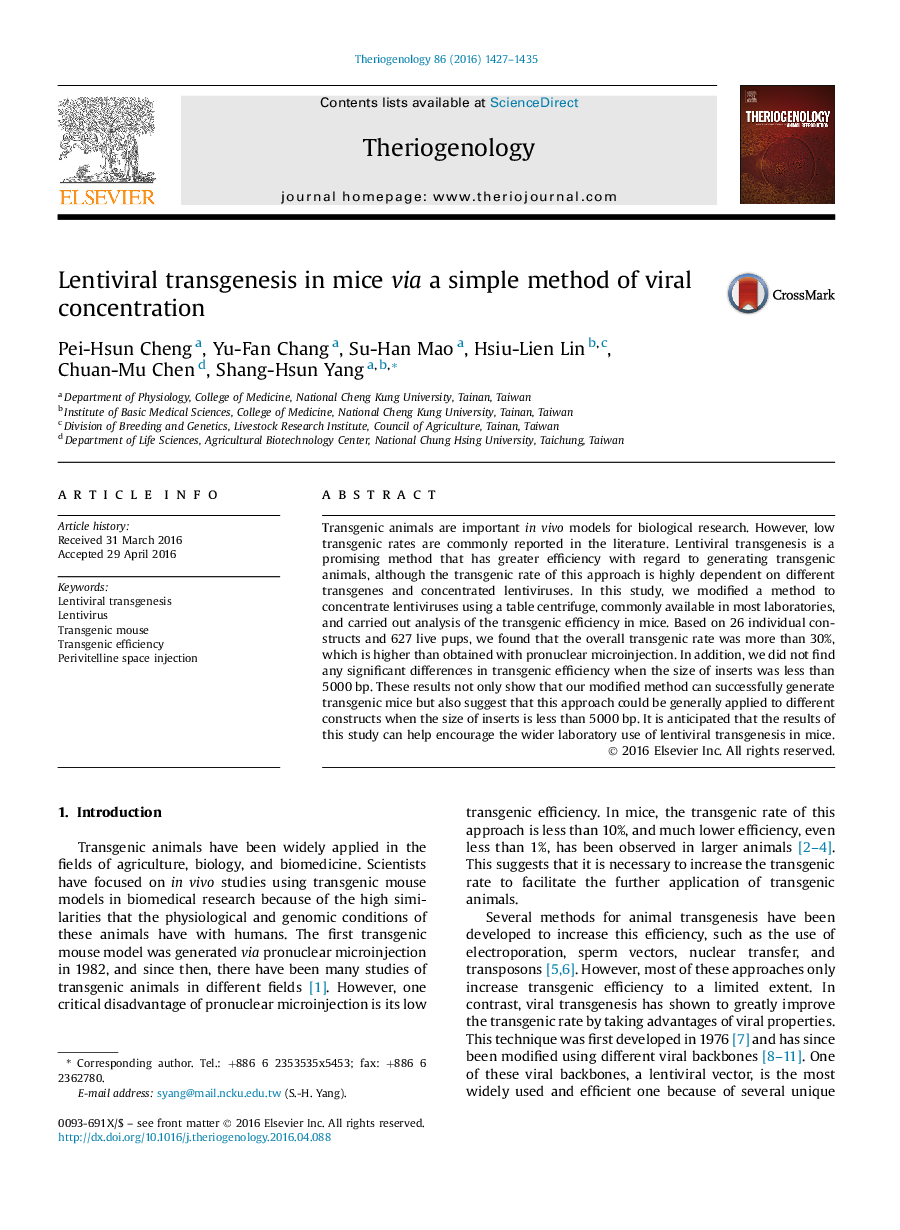| Article ID | Journal | Published Year | Pages | File Type |
|---|---|---|---|---|
| 2094678 | Theriogenology | 2016 | 9 Pages |
Transgenic animals are important in vivo models for biological research. However, low transgenic rates are commonly reported in the literature. Lentiviral transgenesis is a promising method that has greater efficiency with regard to generating transgenic animals, although the transgenic rate of this approach is highly dependent on different transgenes and concentrated lentiviruses. In this study, we modified a method to concentrate lentiviruses using a table centrifuge, commonly available in most laboratories, and carried out analysis of the transgenic efficiency in mice. Based on 26 individual constructs and 627 live pups, we found that the overall transgenic rate was more than 30%, which is higher than obtained with pronuclear microinjection. In addition, we did not find any significant differences in transgenic efficiency when the size of inserts was less than 5000 bp. These results not only show that our modified method can successfully generate transgenic mice but also suggest that this approach could be generally applied to different constructs when the size of inserts is less than 5000 bp. It is anticipated that the results of this study can help encourage the wider laboratory use of lentiviral transgenesis in mice.
